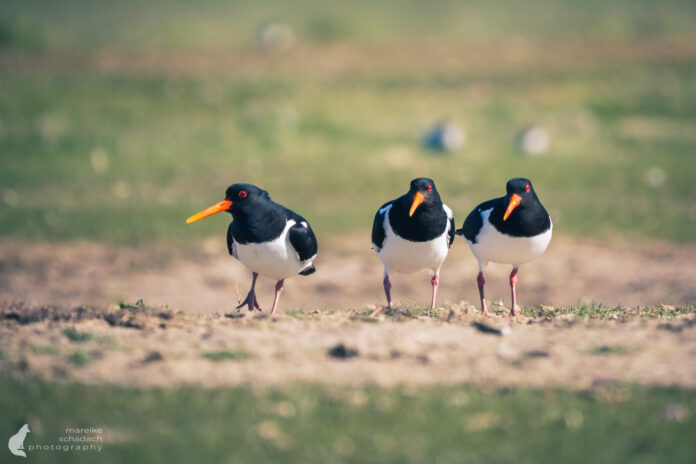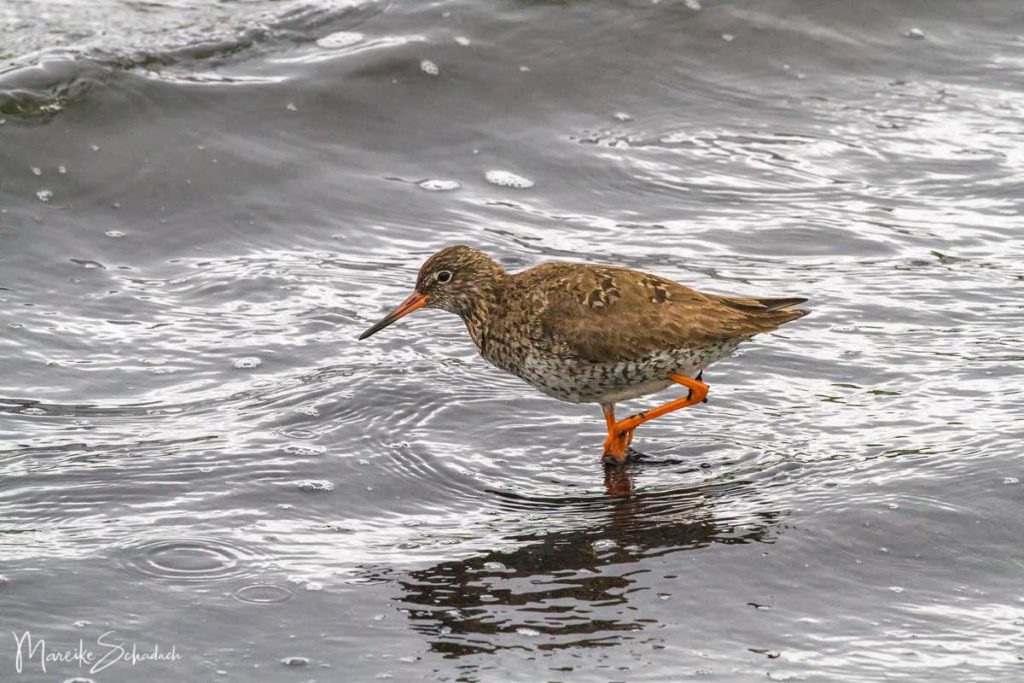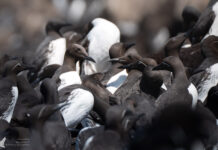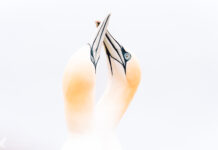Germany. In the middle of the Hamburg Wadden Sea National Park, around 100 kilometers from Hamburg City Hall, lies the small island of Neuwerk. Neuwerk is a fascinating birdwatching destination, especially in May, when the weather slowly gets warmer and life in the coastal landscape blossoms. This month marks the breeding season for many species, while at the same time, some migratory birds stop off on the island on their way to their Nordic breeding grounds.
Neuwerk: a Habitat between Sea and Marsh
Neuwerk is only about 3 square kilometers in size, but it is of inestimable ecological value. The island is surrounded by extensive salt marshes, tidal creeks, and mudflats. The tides set the rhythm: Twice a day, the mudflats disappear under water, twice a day they are exposed. This dynamic creates ideal conditions for a variety of bird species, such as the oystercatcher, avocet, and spoonbill. The island itself is characterized by extensively used grassland, old terps, a historic lighthouse, and an open, wide landscape in which the gaze can wander - until it catches sight of the next flock of birds. Or one of the many horses that live here, more than the island's population.
Only around 32 people live on the island on a permanent basis, mainly from tourism. Every year, Neuwerk attracts around 120,000 visitors who appreciate the peace and quiet, walks in the sea breeze, and the vastness of the mudflats and sea.
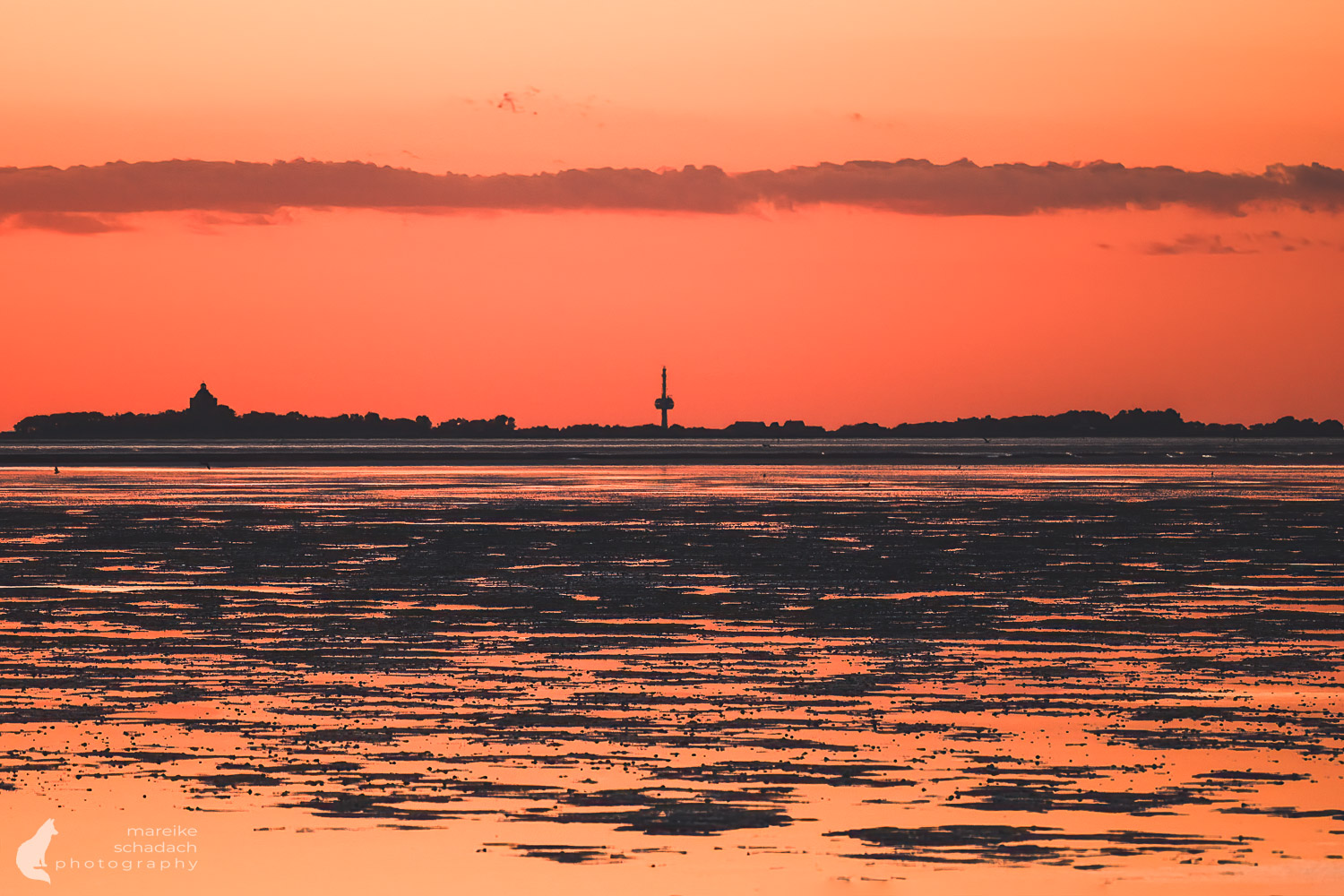

The Hamburg Wadden Sea
The Hamburg Wadden Sea is the smallest of the three German Wadden Sea National Parks. It comprises the island of Neuwerk, the uninhabited island of Scharhörn, and the island of Nigehörn, all of which are subject to strict protection regulations. The Hamburg Wadden Sea National Park, founded in 1990, serves to preserve valuable habitats characterized by tides, salt marshes, tidal creeks, and mudflats. Due to its ecological importance, the Wadden Sea is a UNESCO Biosphere Reserve and World Heritage Site. The national park is divided into two zones: zone 1 is reserved for nature, while zone 2 is for sustainable living and economic activity.
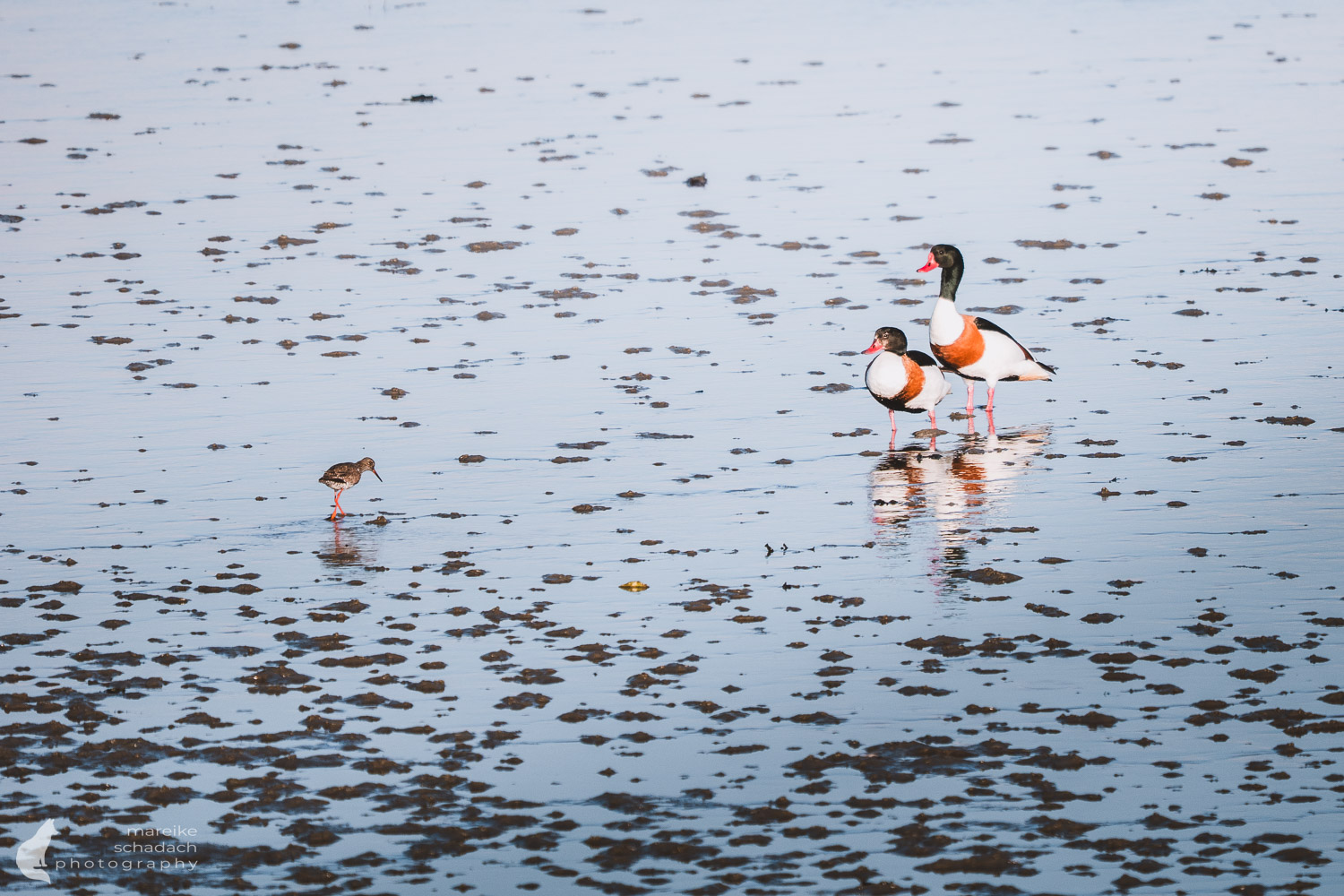
Bird Diversity on Neuwerk: Breeding Birds & Migrants
TIP: Before you go birdwatching, I recommend a visit to the Neuwerk National Park House. Here you will not only learn lots of interesting facts about the habitat, but also get tips for birdwatching and can take a small map of Neuwerk with you.
So far, over 300 bird species have been recorded in the national park. There is always something to observe or even discover, and Neuwerk is a great birdwatching destination at any time of year. However, thousands of brent and barnacle geese rest on the island during the “goose weeks” during the main migration period. During this time, additional events are held on Neuwerk in April and May on topics relating to geese, bird migration, and nature conservation. May is a very good month for birdwatching on Neuwerk. In addition to the migratory birds, numerous breeding birds are already busy incubating their eggs or even rearing their young, including oystercatchers, avocets, redshanks, various gull species such as the black-headed gull and herring gull, spoonbills, sandwich terns, arctic terns and common terns, eider ducks and greylag geese.
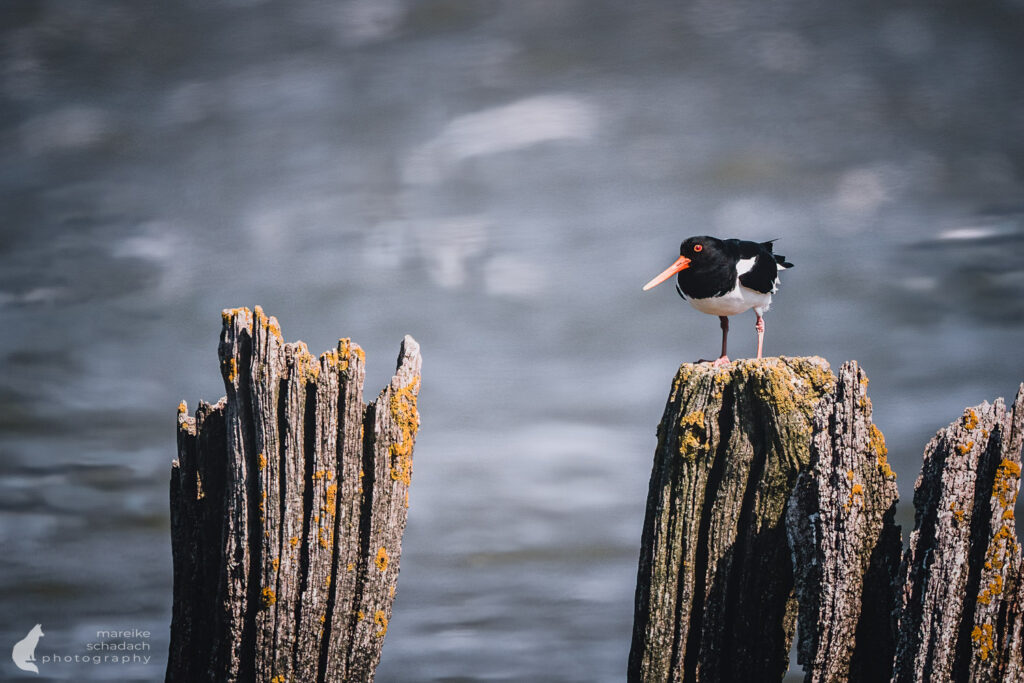
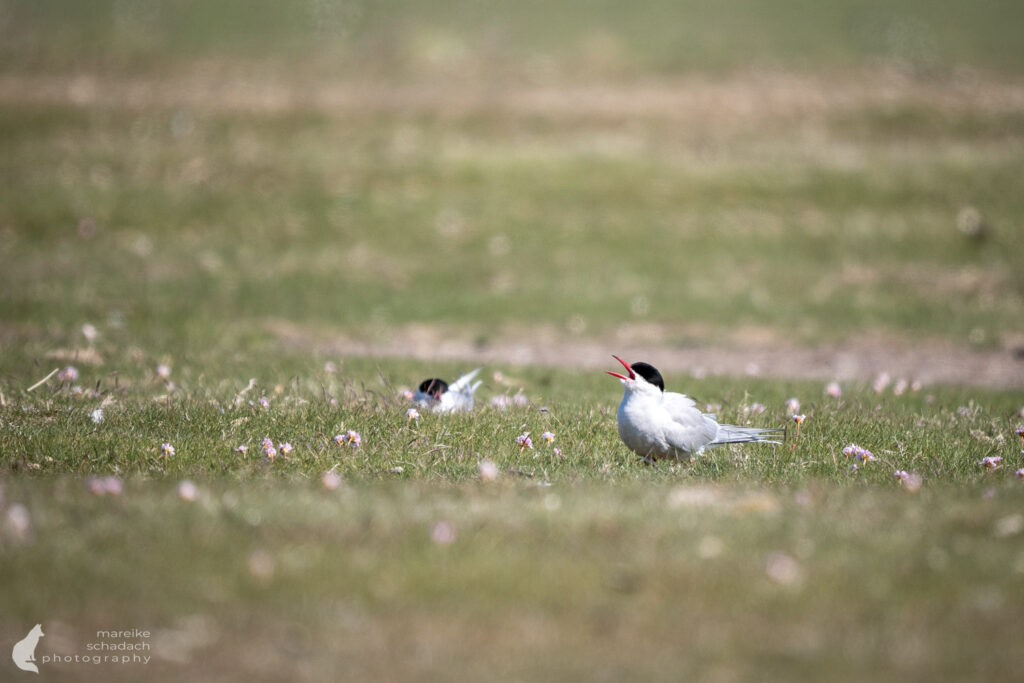
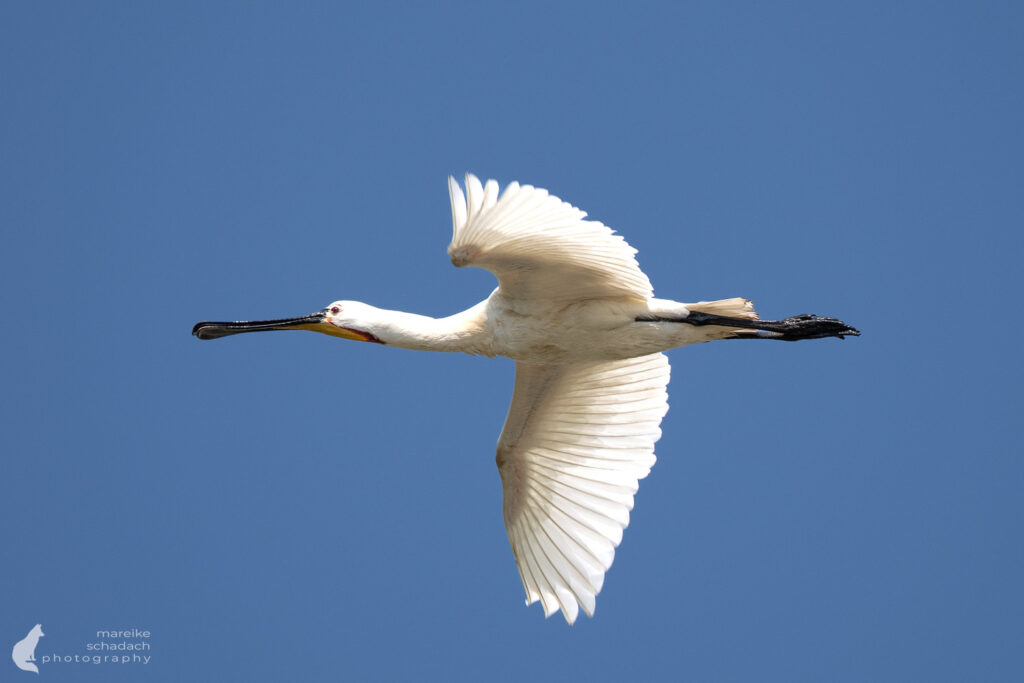

At the same time, some migratory birds are still on Neuwerk, stopping off on the island on their way to the Arctic breeding grounds. Brent geese, barnacle geese, and shelducks are resting on the salt marshes, sometimes in large flocks. Bar-tailed godwits, knots, curlews, dunlins, greenshanks, and other waders use the mudflats to forage.
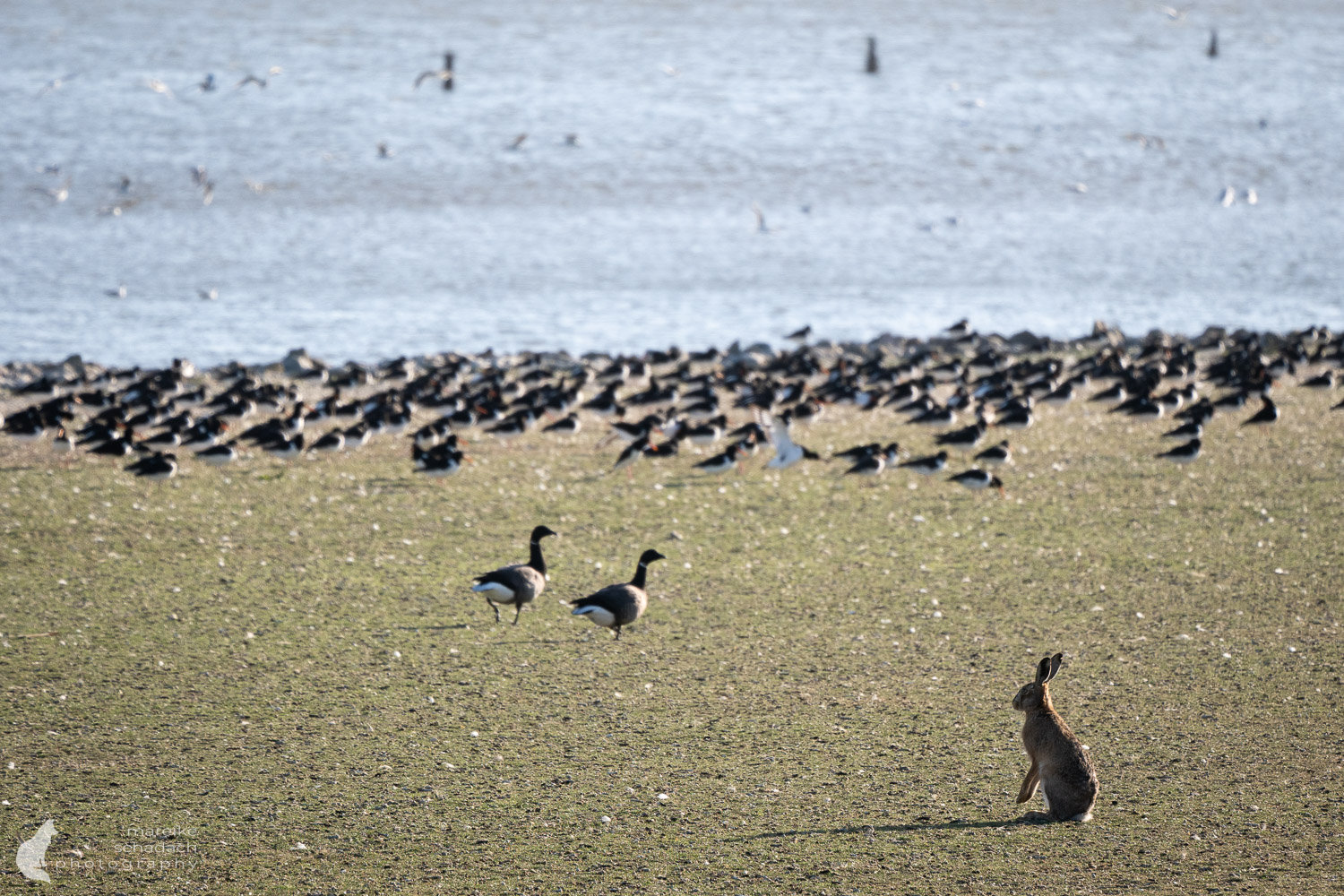
Excursion to the Bird Island of Scharhörn
The island of Scharhörn is a strictly protected bird sanctuary. Anyone wishing to visit the island must register with the island's bird warden before setting off on the mudflat hike. The approximately two-hour, seven-kilometer hike is only possible at low tide. The route is marked with bush pegs and shows the safest route through the open mudflats. On Scharhörn itself, there are no fixed paths, no houses, no tourist infrastructure - just a dune island surrounded by salt marshes where thousands of seabirds breed. More information can be found here. The national park administration, the Jordsand association, and mudflat guides offer guided hikes. Wadden wagons also travel to Scharhörn by arrangement. Information on this can be obtained from the wagon operators. here. Die Nationalpark-Verwaltung, der Verein Jordsand und Wattführer bieten geführte Wanderungen an. Nach Vereinbarung fahren auch Wattwagen nach Scharhörn. Informationen hierzu gibt es bei den Wattwagenbetreibern.
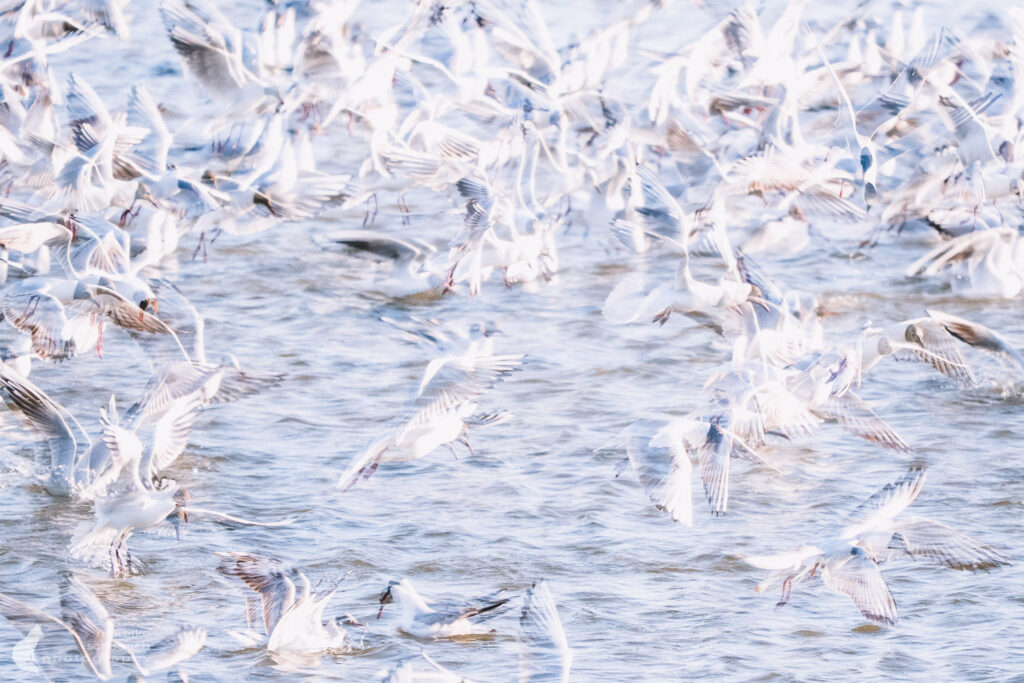
Not to be missed: the Neuwerk Lighthouse
The Neuwerk lighthouse is not only the most important landmark on the island of Neuwerk, but is also the oldest surviving structure in Hamburg and the oldest secular building on the German coast. It was built between 1300 and 1310 as a defensive tower to protect the mouth of the Elbe from pirates and plunderers and to safeguard Hamburg's important trade via the waterway. Over the centuries, the tower served not only as a defense tower, but also as a refuge during storm surges and as a landmark for shipping.
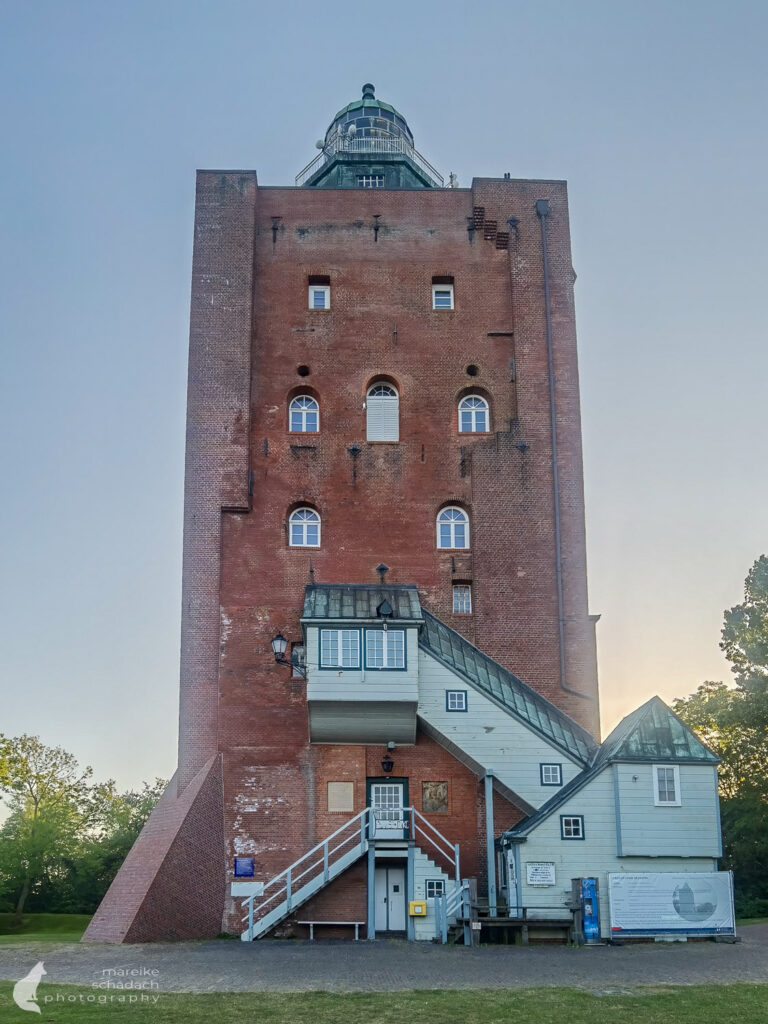
On December 20, 1814, the tower was officially converted into a lighthouse. Initially, the beacon was powered by a 5-wick kerosene lamp. In 1942, a switch was made to electricity, with the light being focused using 21 parabolic mirrors arranged in a circle. The lighthouse has been out of service as an official navigation mark since February 2014, but is still operated by the Hamburg Port Authority as a so-called “private light”.
Today, Neuwerk Lighthouse is a listed building and a popular excursion destination. Visitors can climb the 138 steps to the viewing platform and enjoy an impressive view over the island and the Wadden Sea. You can even spend the night in the historic lighthouse.
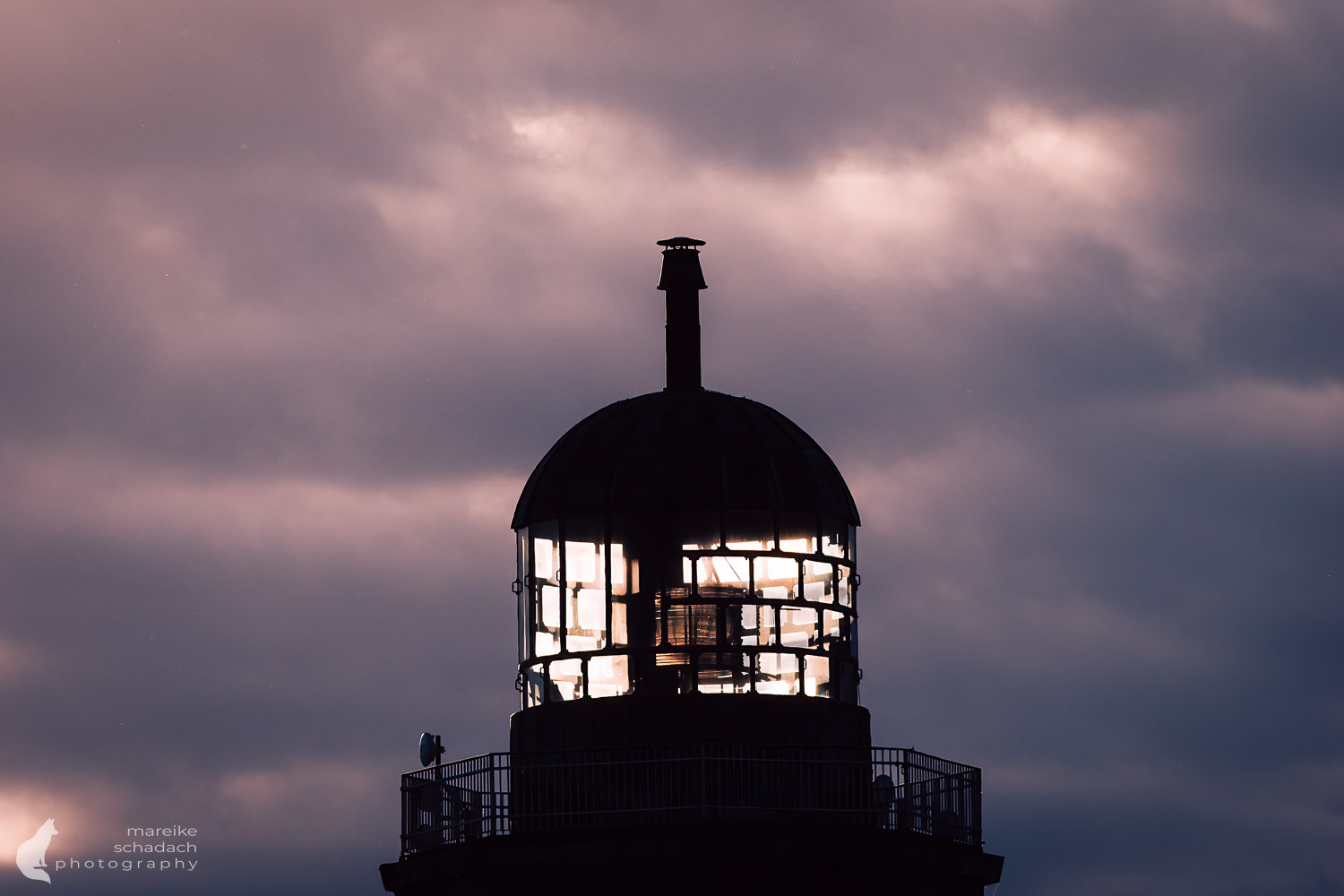
As a Guest in Nature - Visiting Rules
We are only guests in nature. The following applies: Leave no traces except your footprints. Don't disturb or destroy anything. Quite simple, isn't it? If you want to know more, take a look at my article “Leave No Trace!” . The following applies to your visit to the Wadden Sea National Park:
- Stay on the marked paths.
- In the foreshore (the area outside the dykes), birds breed in the meadows. Do not go cross-country, watch out for nests, and stay on the paths.
- Dogs must be kept on a lead outside the dykes.
- Keep your distance from the animals.
- No drones, kites or other flying objects are permitted in Zone 1 of the national park.
- Do you see an animal in distress? Report it to the Jordsand Association or the National Park Station.
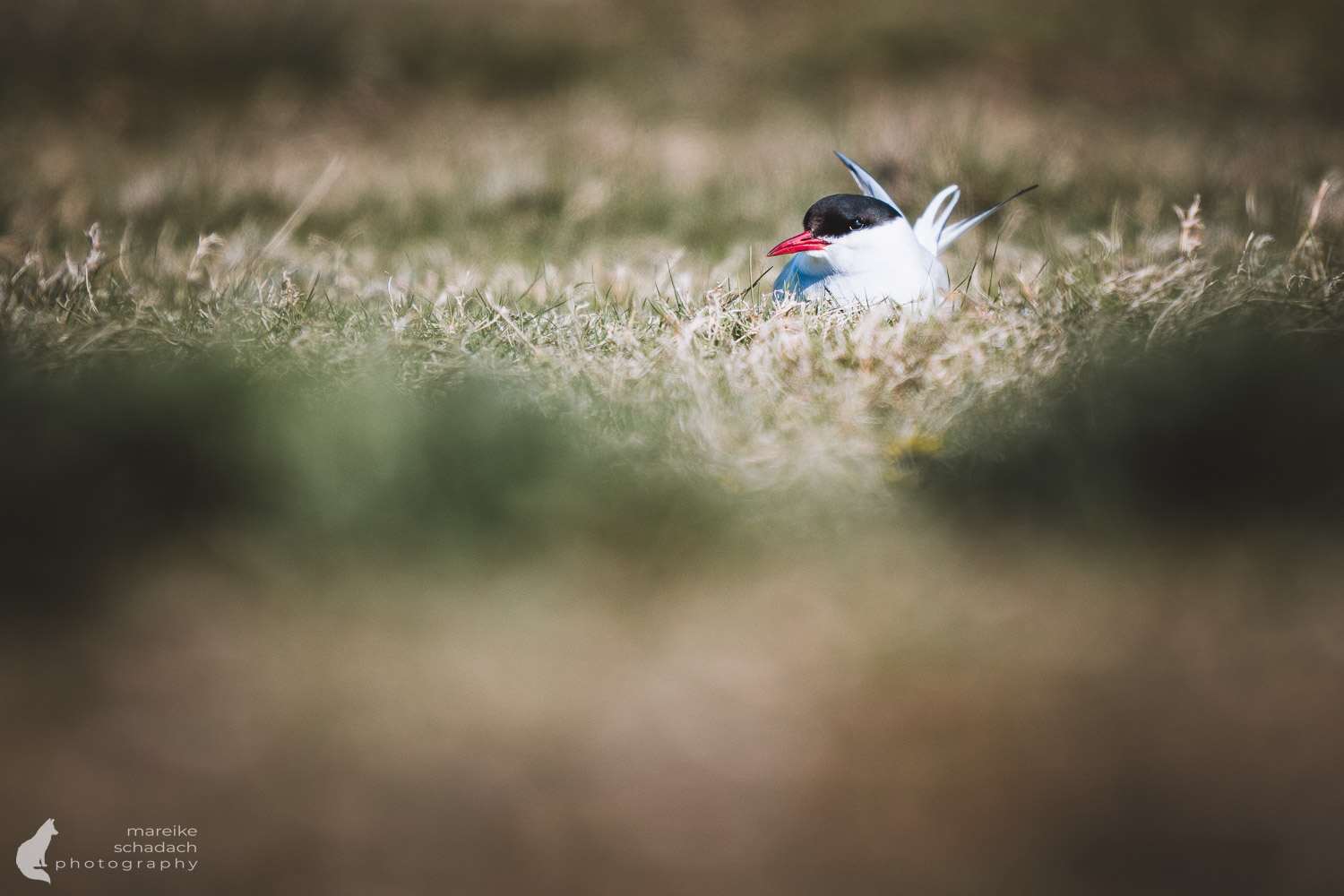
Getting there: on foot, by Wagon, by Boat or on Horseback
The island can be reached depending on the tide - either on a mudflat walk with an experienced guide or on your own (approx. 2.5-3 hours) or by horse-drawn carriage (the “Wadden Wagon”). During high tide, the MS Flipper sails from Cuxhaven to Neuwerk. Information on departures can be found on the website of the Cassen Eils shipping company.
I traveled both routes with the horse-drawn carriage from The old Fisher House and really enjoyed the 1.5-hour ride. As you don't move around much on the carriage, I was very happy to have a warm jacket, scarf, and hat.
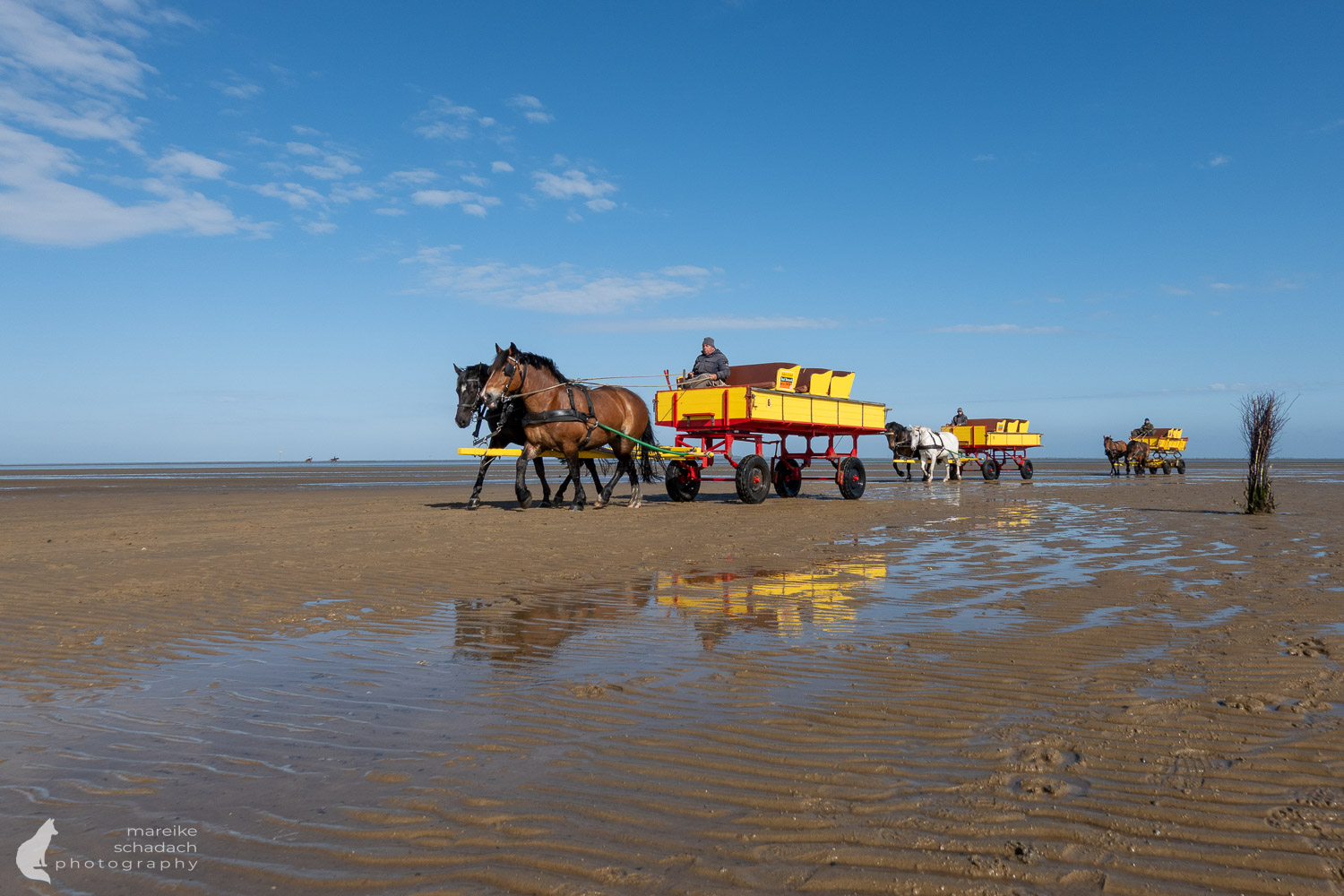
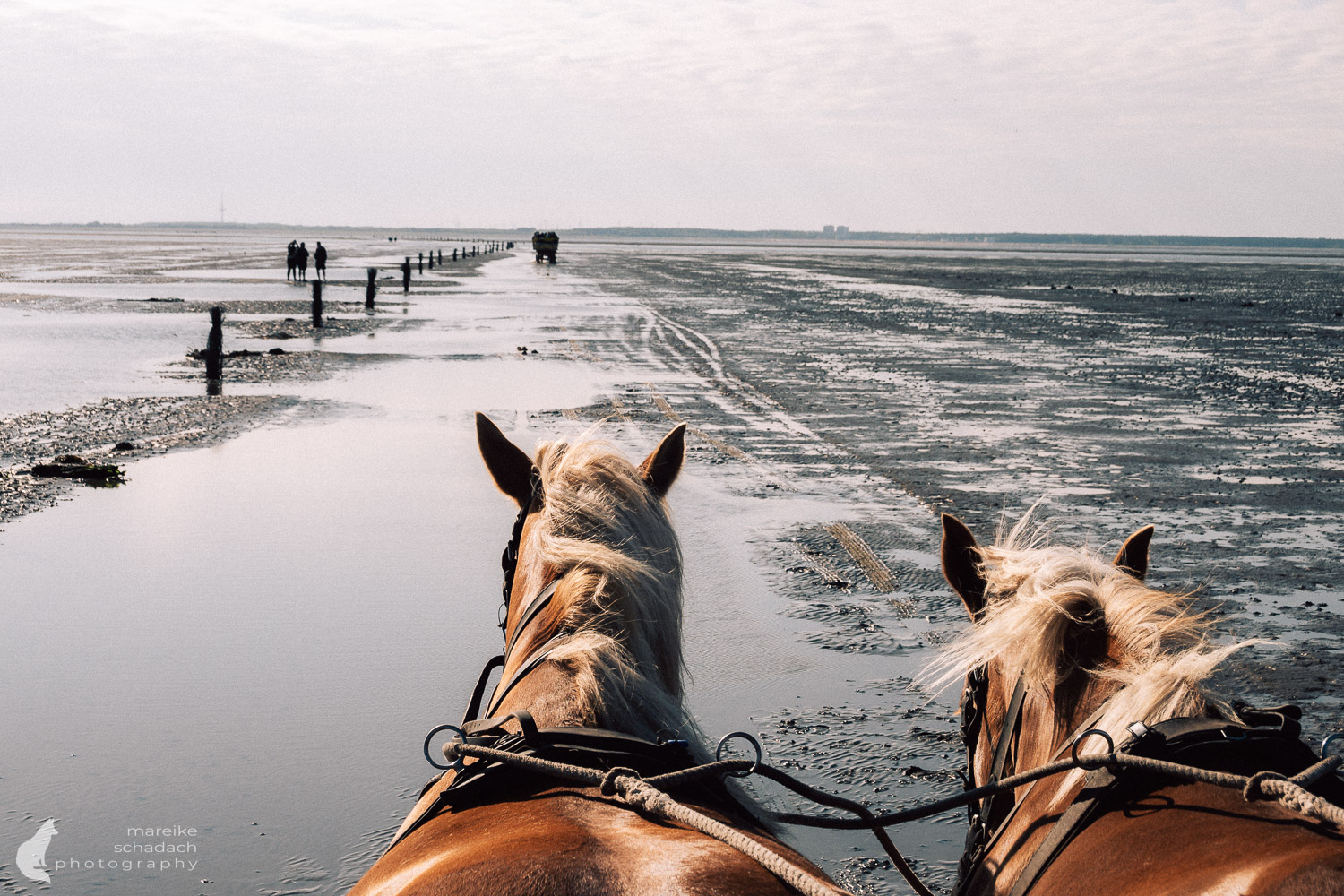
Mudflat hiking from Sahlenburg to Neuwerk
A mudflat hike from Sahlenburg (Cuxhaven) to the island of Neuwerk is a unique nature experience, but one that requires careful preparation and observance of safety rules.
The route is around 11 kilometers long and takes around 2.5 to 3 hours at a normal walking pace. The exact duration depends on various factors, including personal fitness, the weather, and the nature of the seabed. Sometimes you have to wade through water for longer stretches.
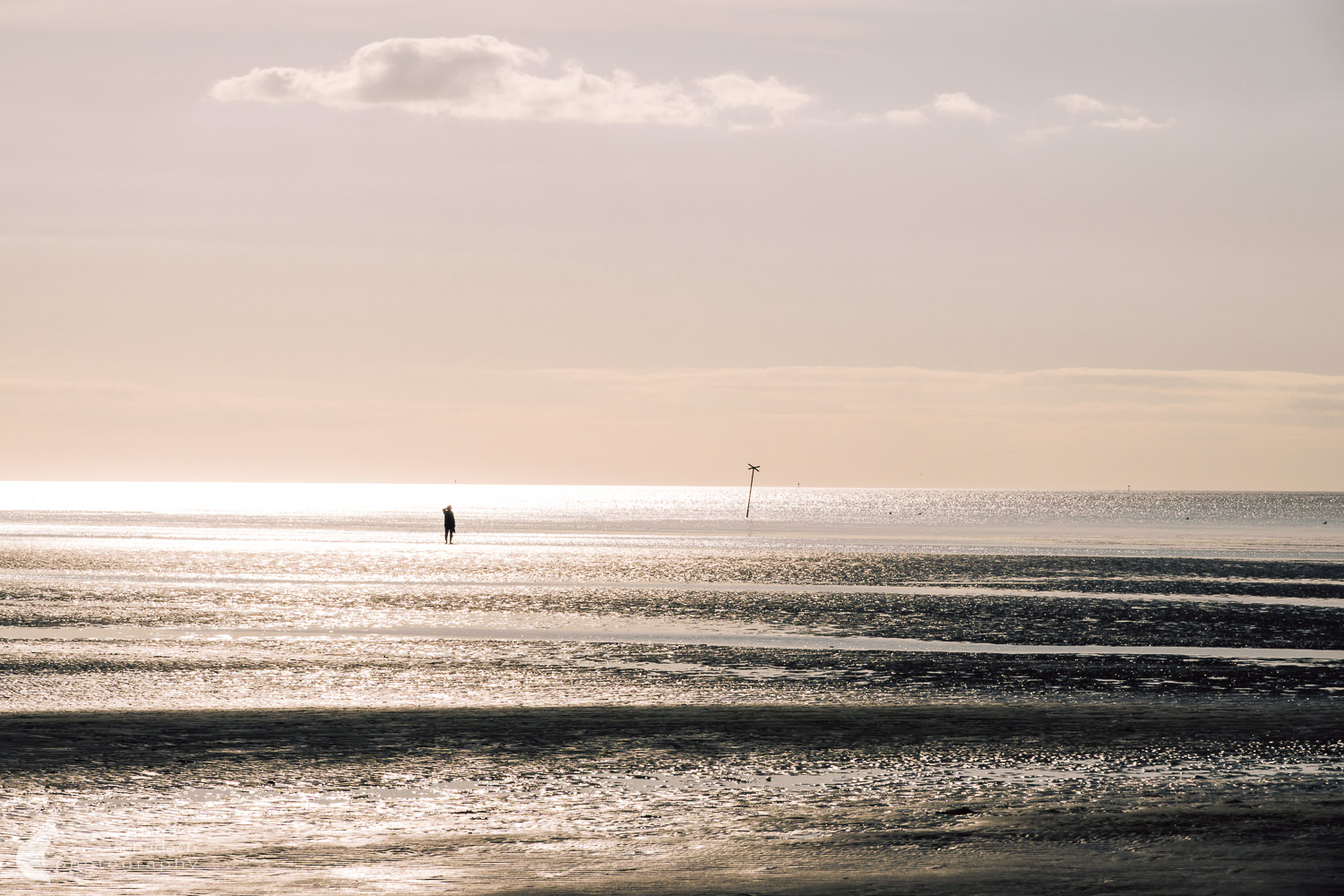
Safety first: Rules for a safe Mudflat Hike
Find out about the tides, the weather, and the planned route before you go into the mudflats! Otherwise, your life could be in danger! There is a rescue station in Sahlenburg where you can get the necessary information.
- Prefer guided tours: Due to the dangers of tidal flats, fog, and rapidly rising water, mudflat walks should be undertaken with local guides. For up-to-date information and bookings for guided mudflat walks, you can contact local providers such as Wattwandern Neuwerk..
- Note the weather conditions: In fog, thunderstorms or storms, entering the mudflats is life-threatening.
- Know the tides: Start the hike about two hours before the lowest water level to avoid being surprised by the tide. Don't set off if you are too late!
- In Zone 1 of the national park, you are only allowed to hike on the mudflats and ride horses along the marked paths.
- Emergency precautions: Find out about rescue beacons and emergency numbers. Carry a fully charged cell phone with you.
- First aid kit: Take it with you! If you walk barefoot, you will quickly cut yourself on the shells.

The right Equipment and Clothing
- Footwear: Sturdy, closed shoes with sturdy soles are ideal to avoid cuts from shells. For example, sneakers with socks or special wading or neoprene shoes are suitable. We do not recommend rubber boots (they will fill up as the water is often deep), sandals, or walking barefoot.
- Clothing: Wear weatherproof, breathable clothing. A windproof and waterproof jacket and a warm sweater are also necessary in summer. Quick-drying shorts or light trousers/leggings are suitable. Pants must be able to be pushed up above the knees.
- Sun protection: The mudflats reflect the sun's rays strongly. Sunscreen with a high sun protection factor, headgear, and sunglasses are therefore important.
- Take along: Pack a towel, drinks, and snacks.
TIP:
Are you looking for binoculars? I am very happy with the Zeiss Terra ED 8×42* . They are handy and even waterproof. Perfect for birdwatching on the island of Neuwerk when the weather is a bit rougher.
(Affiliate link to Amazon)

Riding on Neuwerk and in the Wadden Sea
Horse riding on Neuwerk and in the surrounding Wadden Sea is an integral part of island life. Guided rides across the extensive salt marshes or through the mudflats are particularly popular - at low tide you can even venture on horseback to the mainland or the island of Scharhörn.
The special climatic conditions, the salty air and the mineral-rich mudflats make Neuwerk a beneficial retreat not only for people but also for horses. In fact, the island is regarded by connoisseurs as a kind of “health resort for horses”: many riders bring their animals to the island in summer to relax. The species-appropriate husbandry on spacious paddocks, the fresh sea air, and the exercise on soft mudflats promote health, especially in the case of respiratory diseases or joint problems. Neuwerk thus offers a rare combination of nature experience, riding pleasure, and veterinary recovery.
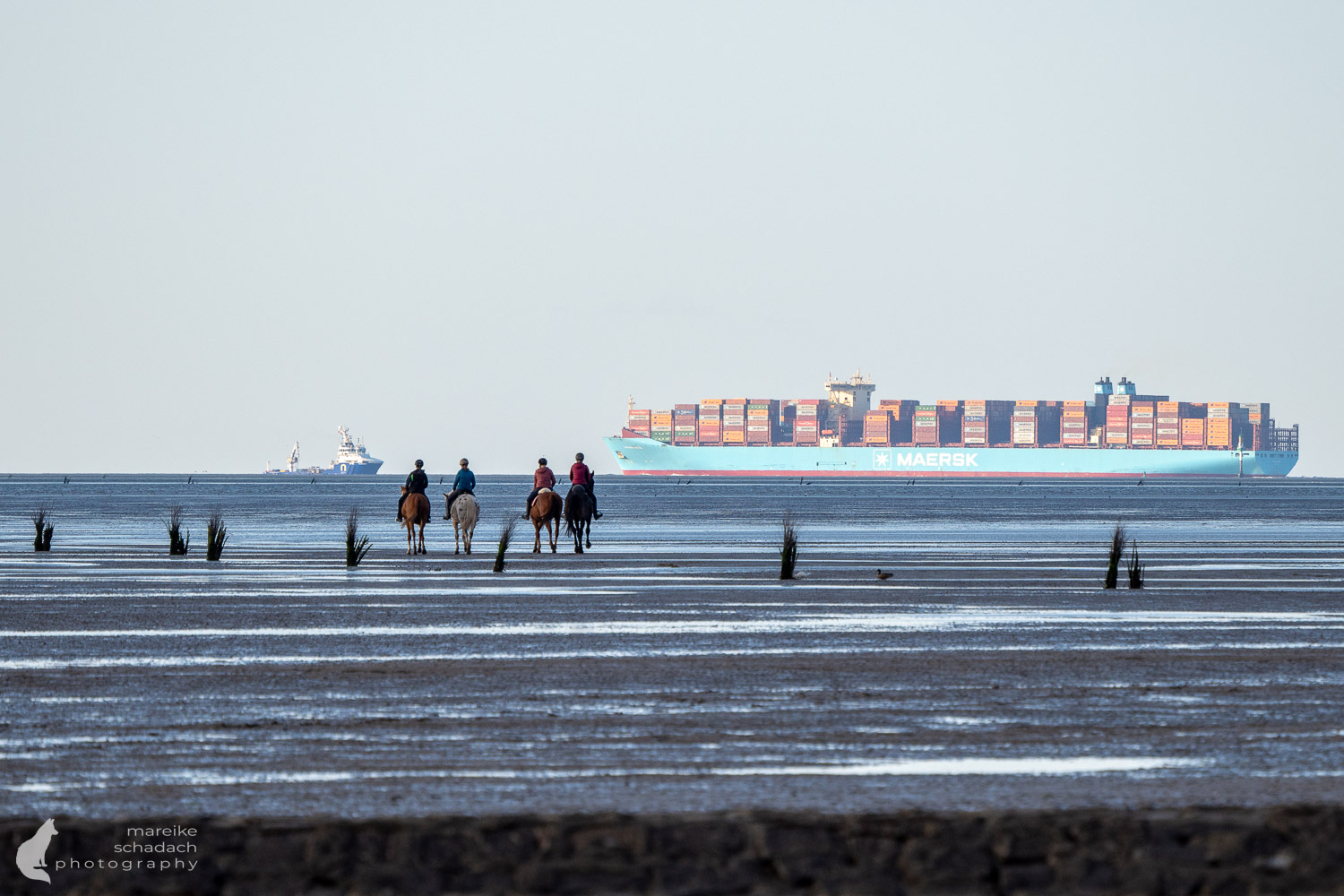
Accommodation and Restaurants on Neuwerk
Despite its small size, Neuwerk offers several places to stay overnight, such as the “Alte Fischerhaus”, Haus Seeblick, the “Nige Hus” inn or the “Hus achtern Diek”. If you prefer a more rustic experience, you can also book into the hay hotel or pitch your tent on the meadow at the hotels. The hotels serve home-style cooking and regional dishes. There is a small island store and a restaurant in front of the Leutturm.
Book Recommendations for Birdwatchers
Want to delve deeper into the hobby of birdwatching? Then I have three book recommendations for you. You can order the books* from Amazon by clicking on the images. If you purchase a book or other item via an affiliate link, I will receive a small commission and you will help me to continue filling Fernweh-Motive with interesting articles. The product will not be any more expensive for you.
Do you have any comments or suggestions about my article? If yes, then write me a comment!
Do you want to know when there are new articles on my blog? Then follow me on Facebook, Pinterest or Instagram. I would also be very happy if you share my article with your friends.
Recommendations for further Reading
Do you want to go birdwatching right away? Then check out my article about Birdwatching in the Pond Landscape Linum and about Birdwatching at Myvatn in Iceland .
